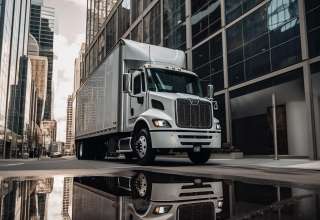One strategy that everyone agrees will help reduce gun violence, and other related crimes are the expansion of FBI-NICS background checks above and beyond what is currently done. This will ensure checks are done beyond the initial sale to reduce the likelihood of guns ending up with the “bad guys.” The theory is that for every time a gun transfers from one individual to another, a background check Miami will help to accurately identify the person and classify the person under various prohibited categories that indicate if the gun might be utilized for criminal purposes.
Another theory underneath this theory is that most guns that will inevitably end up in the wrong hands, do so because an individual with a clean record purchases the gun with the intention of handing it over to another person who can’t pass the background check, and as such, the person can’t be identified as the first purchaser of the gun. When such transactions occur, it is often known as a “straw sale,” and should this person end up selling the gun to another person; it is termed as “gun trafficking.” Both “straw sale,” and “gun trafficking” are two ways via which most guns end up with the “bad guys.”
Several studies carried out have shown that a bulk of the guns recovered from crime scenes come from places other than the location of the crime. In some cases, these locations end up being other towns, cities, and even states.
The limitations of any data or survey carried out are that they can only show the first gun transaction and not the subsequent transactions. The reason for this is that most states don’t have a reporting system, where individuals can report gun thefts or even report when they no longer possess a gun. As it stands, only federally-licensed gun dealers report missing guns to the ATF, and only a few dealers actually file a report.
A study done by researchers from the University of Pittsburgh revealed that more than 80 percent of 762 guns studied from individuals who weren’t the legal owners of the gun. And of that number, more than 60 percent were stolen. With this, it is evident how firearms easily end up with the wrong people each year with no way to trace the source.
It goes to show that an extensive background check might not curtail the rise of stolen guns. But if gun owners know that they will face a severe penalty should they fail to report gun thefts, then maybe, just maybe more people will take extra care of their guns.
Sources:
Clearcheks does universal background checks to visit their website to get more detail information related to background checks and drug testing.
United Screening provides all types of background checks and eviction checks so use their website as a source for more information.
Mexico’s Trucking Organization President uses the Wait and See Approach on NAFTA
The Can a car president, Mexicos trucking Organization, Rogelio F. Montemayor-Morineau, said he would wait and see for the future of the North American Free Trade Agreement (NAFTA) because of the increasing trade between Canada and Mexico.
The Organizations President said “What is going to happen in the future, I really don’t know”, because of the uncertainty that surrounds NAFTA when the new Trump administration is reviewing the agreement. After that, he goes on to say, “But I hope it’s good for our three countries.”
The Organizations President explained improvements to NAFTA would make waiting times longer than they already are at the U.S – Mexico border, and could also affect the price of goods and even the quantity of goods crossing the borders between Canada, the U.S., and Mexico.
The Organizations President admits when he spoke to the attendees at the Alberta Motor Transport Association (AMTA) Leadership Conference in Banff, Alta. “We don’t know what to do or what to expect, so we will wait, (NAFTA) has been good to us, and it has been good to our economy.” on April 29.
The Organizations President presented both the U.S. and Canada with an explanation of Mexico’s trade situation and said that after NAFTA was introduced in 1994, given the hesitations of his country at first, it was better for Mexico, with statistics to prove it.
Canada-Mexico’s total trade has continued to rise, with the $12.5 billion made in 2006 rising to over $20 billion in 2016, which is a slight drop from a high of $20.8 billion in 2012. Trade between Canada and Mexico has increased by an average of 11 percent each year; with Canada now rank seventh in Mexico in terms of foreign direct investment. In 2016, Mexican trade with the U.S. amounted to $482 billion, down from $513.6 billion in 2014.
Mexico has 49 entry points, of which five are considered main entry points with the United States – Tijuana, Ciudad Juarez, Honduras, Nuevo Laredo, and Ciudad Reynosa. Nuevo Laredo is responsible for 34.25% (2.33 million) of commercial vehicle crossings and 16.2% of Tijuana.
The U.S – Mexico border has a total of 19 ports of entry. However, waiting times for truck drivers at these entry points are lengthy, amounting to a period of five to six hours.
So, once Mexican truck drivers reach the U.S., they must then drop their freight within a distance of 20 kilometers from the border, after that it is then picked up by an American carrier who completes the transport of the goods to their final destination in the U.S. and Canada, a Montemayor-Morineau system said has created problems for many Mexican trucking companies.
The Organizations President said that approximately 80 percent of Mexico’s goods are transported by truck, with the remainder being transported by rail, and that the sector has been hit by a driver shortage, like Canada and the United States.
Vehicle production is crucial to the Mexican economy as it is the world’s seventh-largest producer and the sixth-largest for heavy-duty vehicles with expected growth. Among other trucking companies, Freightliner, Daimler, Cummins, Kenworth, and Hino all have factories in Mexico.
Next, The Organizations President says of the country’s number of vehicles produced and exported, “When it comes to NAFTA and they say they are going to increase the taxes on automotive, that’s one of the reasons.” Over 8 percent of Mexico’s exports are automotive, 5.7 percent are automotive accessories, and then 5.4 percent are trucks.
Despite the success of the automotive industry in Mexico, Montemayor-Morineau said the southern region is still struggling with manufacturing, something that the government is making efforts to change, with the vast majority of industrial activity in the northern and central regions.











